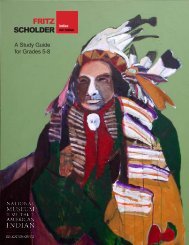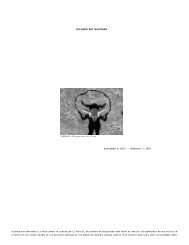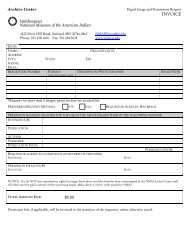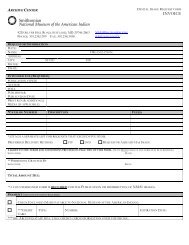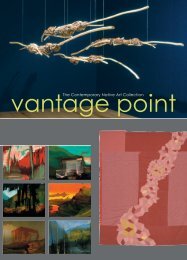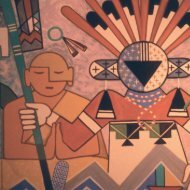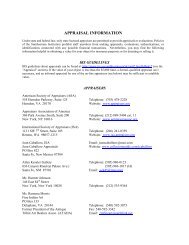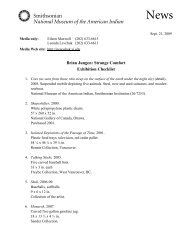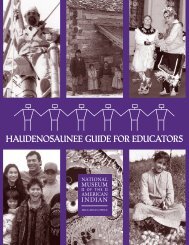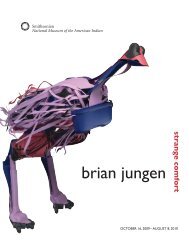Lone Dog's Winter Count - National Museum of the American Indian ...
Lone Dog's Winter Count - National Museum of the American Indian ...
Lone Dog's Winter Count - National Museum of the American Indian ...
You also want an ePaper? Increase the reach of your titles
YUMPU automatically turns print PDFs into web optimized ePapers that Google loves.
NATIONAL M USEUM OF THE A MERICAN I NDIAN<br />
LONE DOG’S WINTER COUNT:<br />
K EEPING H ISTORY A LIVE<br />
Grade Level: 4–8<br />
Time Required: Approximately 4 one-hour class periods and 2-3 homework sessions<br />
OVERVIEW<br />
Students learn about <strong>the</strong> oral culture and history-keeping<br />
<strong>of</strong> <strong>the</strong> Nakota people, who made <strong>the</strong> <strong>Lone</strong> Dog <strong>Winter</strong><br />
<strong>Count</strong>. Then <strong>the</strong>y create a monthly pictograph calendar<br />
<strong>of</strong> <strong>the</strong>ir own to document a year <strong>of</strong> <strong>the</strong>ir personal history.<br />
C URRICULUM S TANDARDS FOR<br />
S OCIAL S TUDIES<br />
<strong>National</strong> Council for <strong>the</strong> Social Studies<br />
• Provide for <strong>the</strong> study <strong>of</strong> <strong>the</strong> ways human beings view<br />
<strong>the</strong>mselves in and over time.<br />
• Provide for <strong>the</strong> study <strong>of</strong> culture and cultural diversity.<br />
The Nakota Make Peace<br />
with <strong>the</strong> Crow <strong>Indian</strong>s<br />
<strong>Lone</strong> Dog <strong>Winter</strong> <strong>Count</strong><br />
(detail), 1851-52.<br />
BACKGROUND<br />
O BJECTIVES<br />
In this lesson, students will:<br />
• Learn about <strong>the</strong> practice <strong>of</strong> making winter counts<br />
among some Native <strong>American</strong> groups.<br />
• Study <strong>the</strong> <strong>Lone</strong> Dog <strong>Winter</strong> <strong>Count</strong>.<br />
• Learn about history keeping in an oral culture.<br />
• Understand how storytellers use pictographs as<br />
mnemonic devices.<br />
• Create a pictograph calendar <strong>of</strong> a year in <strong>the</strong>ir<br />
own lives.<br />
Communities are defined by <strong>the</strong>ir languages, cultures, and histories. The languages <strong>of</strong><br />
Native <strong>American</strong>s were not traditionally written. They were only spoken, which meant<br />
that tribal histories and o<strong>the</strong>r important information had to be remembered by people<br />
and passed down orally from generation to generation. This is what is known as an<br />
oral tradition. Sometimes, Native communities used creative tools to help <strong>the</strong>m<br />
remember <strong>the</strong>ir complex histories. A winter count was one such tool that certain<br />
Native <strong>American</strong> communities <strong>of</strong> <strong>the</strong> Nor<strong>the</strong>rn Great Plains region used to help<br />
record <strong>the</strong>ir histories and to keep track <strong>of</strong> <strong>the</strong> passage <strong>of</strong> years. Here is how it worked:<br />
in <strong>the</strong>se communities, <strong>the</strong> annual cycle was measured not from January through<br />
December; but ra<strong>the</strong>r from <strong>the</strong> first snowfall to <strong>the</strong> next year’s first snowfall. This<br />
entire year was sometimes referred to as a winter. Near <strong>the</strong> end <strong>of</strong> each year, elders in<br />
each community met for an important discussion. They talked about <strong>the</strong> things that<br />
had happened since <strong>the</strong> first snowfall and <strong>the</strong>y chose one particular event to serve as a<br />
historical reminder for <strong>the</strong> whole year. The year was <strong>the</strong>n forever named after <strong>the</strong> chosen<br />
event. It <strong>the</strong>n became <strong>the</strong> responsibility <strong>of</strong> one person in <strong>the</strong> community to design<br />
T EACHING P OSTER<br />
1



